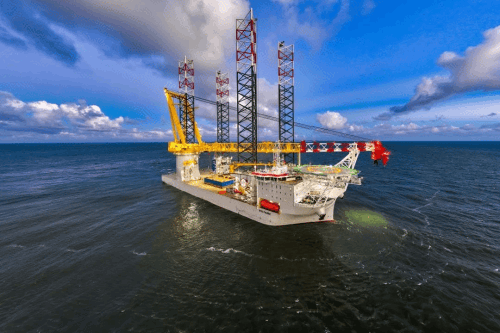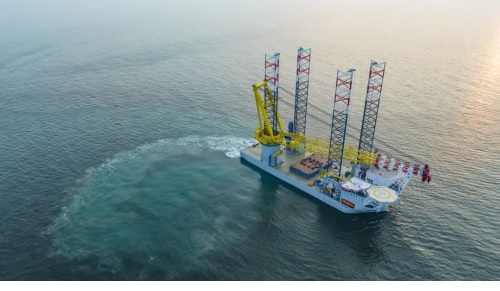World's First 4th Generation Jack-up Wind Turbine Installation Vessel Delivered by COSCO SHIPPING

World’s First 4th Generation Jack-up Wind Turbine Installation Vessel Delivered by COSCO SHIPPING (Qidong) Offshore.
On December 20, the world’s first fourth-generation jack-up wind turbine installation vessel N966, built by COSCO SHIPPING (Qidong) Offshore, a subsidiary of COSCO SHIPPING Heavy Industry, was delivered and began its maiden voyage.

It is the world’s first fourth-generation jack-up wind turbine installation vessel built with the largest lifting capacity and the most advanced design for a top European dredging company by COSCO SHIPPING (Qidong) Offshore. The vessel has an LOA of 181 meters, a molded beam of 60 meters, a molded depth of 14.6 meters, four pile legs of 131.94 meters, and a main crane lifting capacity of 3200 tons. Designed with four pile legs supported by DP2 power positioning system, the vessel can be used for 18-20 MW offshore wind turbine installation. The effective load of its deck is approximately 14,000 tons, and the living area can accommodate 110 people. The pile legs are 130 meters high and can be operated in a water depth of no more than 80 meters.
Compared with traditional jack-up wind turbine installation vessels, this vessel offers better maneuverability, the ability to carry next-generation wind turbines and bases, greater deck space to optimize offshore installation work, and reduced fuel consumption and emissions. Its exhaust emissions can meet not only the IMO T3 requirements but also the Euro 5 emission standards, as the first ship of its kind to meet the Euro 5 standards.
After setting sail for Dubai for the installation of turbine component fixtures, the vessel will head for the Dogger Bank wind farm in the North Sea of the UK for turbine installation in three project phases, each with an installed capacity of 1.2 GW. The wind farm is expected to be commissioned in 2026 and, after operational, will generate 18 billion kWh of electricity annually, accounting for 5% of the UK’s power demand.
